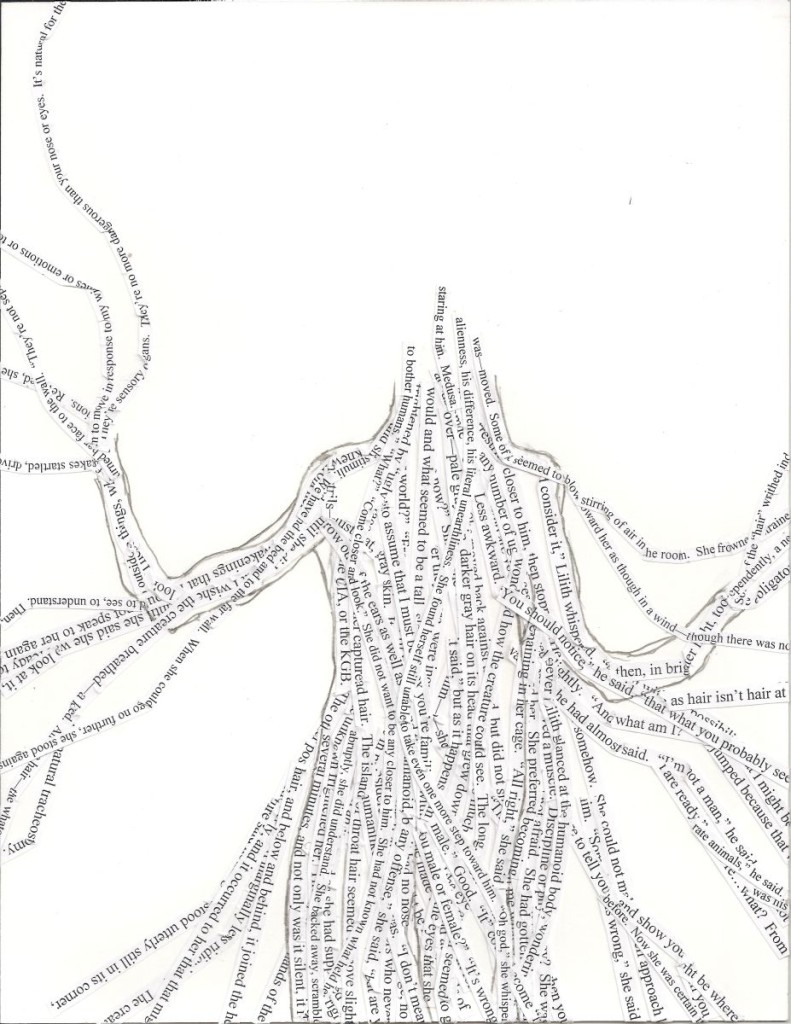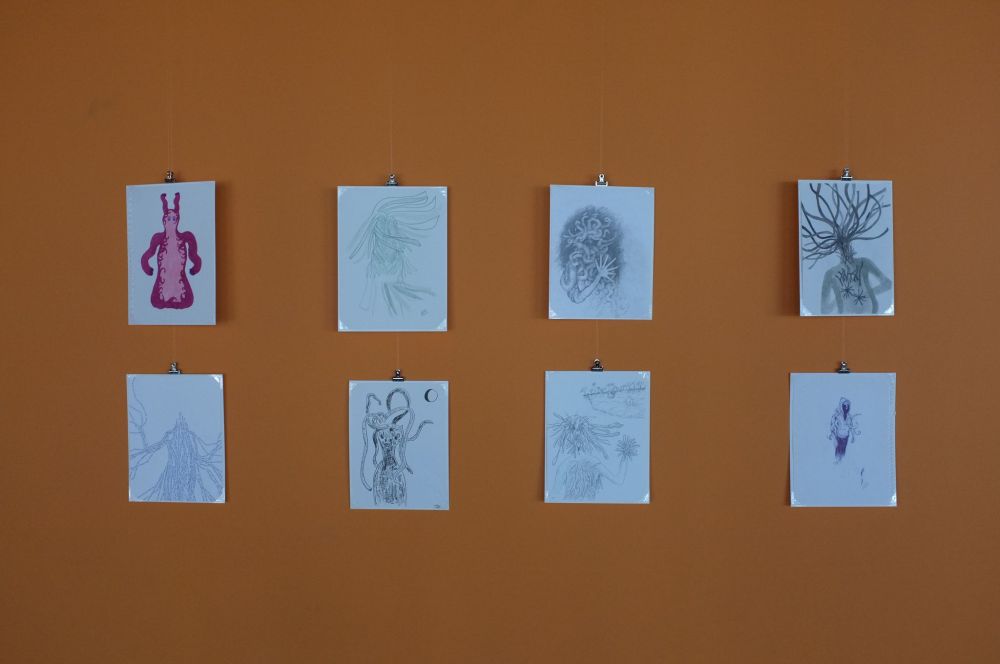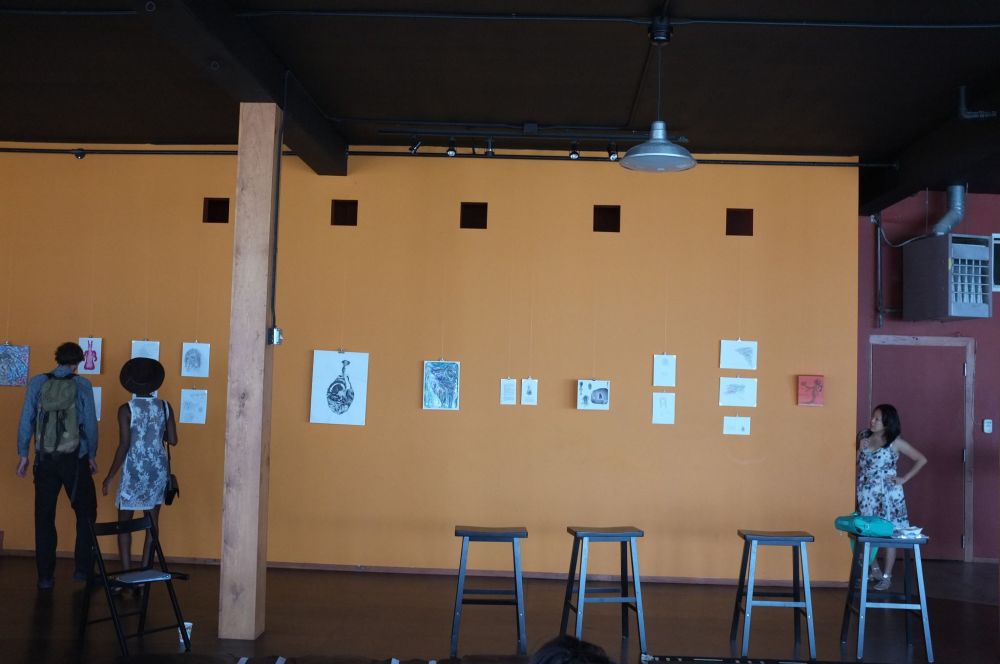For the past few years, I have taught Octavia Butler‘s Dawn (part of her Xenogenesis trilogy) in a number of my classes, including a class on technology and identity, an introduction to LGBT studies course, and most recently, a class on African American science fiction. Every time I teach the novels–which are about a post-apocalyptic Earth where aliens called Oankali have “rescued” the remaining humans–I have my students do an assignment where they try to visualize, to draw the aliens. The assignment prompt reads:
Imagining the Oankali
For this exercise, draw or create a one-page visual representation (8.5″ x 11″) of what you imagine Octavia Butler’s Dawn’s “Oankali” to look like, be like, act like, live like. How do you represent or convey something conveyed only through words, inferences, and expectations? Consider the initial descriptions of Jdahya: “His tentacles seemed to solifiy into a second skin–dark patches on his face and neck, a dark, smooth-looking mass on his head…He looked remarkably human now. Was it only the tentacles that gave him that sea-slug appearance? His coloring hadn’t changed. The fact that he has no eyes, nose, or ears still disturbed…His skin was cool and almost too smooth to be real flesh…” (23). You can hand draw, use mixed media (but keep it flat), use digital tools. Be creative and think critically. Given that one of the central tensions in Dawn is a decentering of the “human,” consider what it means to try to represent something alien, monstrous, different, nonhuman, posthuman, even inhuman.
My classes produced some very interesting results: here and here. The assignment was inspired by a friend and colleague Sue Shon’s similar exercise. Sue has gone on to curate a collection of drawings (to be turned into a book), and I was fortunate to be invited to be included. Here is my piece:
Edmond Chang
Jdahya Study #1, 2012
Collage on paper, pencil
8.5 x 11 inches
Most recently, Sue and her friend Megan Hyde found a space for the Oankali drawings, which debuted in Seattle as part of the second annual Octavia E. Butler birthday tribute called Wild Seed. Here is the exhibition description:
The event includes the exhibition Xenology: Drawing in Response to Octavia Butler’s Dawn, curated by Megan Hyde and Sue Shon. The Xenology drawing project visualizes the Oankali alien species in Octavia Butler’s brilliant novel Dawn. Via drawing, over twenty participants, including formally trained and amateur artists, imagine the Oankali as described in the text.As both an extension and an expansion of Dawn, the collection of drawings can be considered a “xenology”: an intense, interrogating study of what becomes perceived, categorized, and known as “the foreign.” The curators hope that the project leads new readers to Dawn, and invite everyone to compose a drawing of their own at the Wild Seed event.
Unfortunately, I was not able to personally make the event. But, by all reports, it was a success. Thanks to Sue and Megan for putting together a varied and wonderful showing. I look forward to seeing the exhibition in situ when it finds another space and opportunity, and I look forward to seeing the book of drawings. Below are a few snaps, including the wall where my piece was hanging (photos courtesy of Jon Cook, more here):



Pingback: Drawing the Oankali Redux – ED(MOND)CHANG(ED)AGOGY